CAA News Today
George Thomas Noszlopy: In Memoriam
posted by CAA — August 31, 2011
Adrian Hicken, a professor at Bath Spa University in England, is the author of Apollinaire, Cubism, and Orphism (Burlington, VT: Ashgate, 2002).

George Thomas Noszlopy
The sudden death of George Thomas Noszlopy on June 5, 2011, age 78, removes a singular and memorable personality from the ranks of British art historians. A longtime member of CAA and a foundation member of the Association of Art Historians, he made notable contributions to the teaching and dissemination of art history in England for almost fifty years.
For more than a decade at Birmingham Polytechnic, Noszlopy served as course director of an ambitious and challenging master’s degree program of which he had been a principal instigator and architect in the early 1970s. At its height and under his aegis, this department was, perhaps, the largest and one of the most successful for postgraduate study of history of art and design in the country. To this achievement may be added his years of service as a regional convenor and tutor for the Open University and his supervision of many doctoral research candidates, an activity he continued as emeritus professor at Birmingham City University.
Born and educated in Budapest, Noszlopy belonged to a generation formed under two successive regimes: first the right-wing, pseudoparliamentarianism of Admiral Miklós Horthy and then the postwar Stalinism of Mátyás Rákosi and the tragic Imre Nagy. During these years black humor became the language of criticism, if not a technique of survival. Noszlopy was not alone in developing a somewhat wry, sardonic attitude. This was to become mollified later in life with an appreciative embrace of the ironic.
Noszlopy published some poetry while still attending gymnasium, but recognizing these efforts to be too derivative, he turned increasingly to the writing of art criticism and the study of art history. His early work matured in direct contact with major figures such as George Lukács and Robert Berény. Noszlopy shared their desire to search for radical alternatives to the then-dominant Stalinist orthodoxy, an attitude epitomized by his slightly older contemporary at university, the writer, poet, and activist István Eörsi, with whom Noszlopy served in the army.
Noszlopy took his first degree in museology (art history and subsidiary subjects) from Eötvös Lóránd University in 1956. His earliest academic experiences were blighted by his family’s “class alien” designation and the constant investigation of his alleged Trotskyist views. The decision to debar him from all universities and colleges in the country was repealed only after the death of Joseph Stalin in 1953.
During the revolutionary fervor of October 1956, Noszlopy was elected to the Revolutionary Committee of the Hungarian Artists’ Association but was soon arrested following the second Soviet military intervention later that year. He escaped from custody and left Hungary, thanks to the sympathetic assistance of an influential friend. Adopting the transitory existence of a stateless individual, he first lived in Vienna, then had a short sojourn in Paris. Noszlopy later remembered this relatively short period, when a single suitcase held his few possessions, as the most intense sense of freedom he had ever experienced.
After Paris, where he was introduced to a circle of scholars around André Chastel, Noszlopy settled in London, having accepted a grant from the Courtauld Institute of Art. He joined the expatriate intelligentsia gathered around the Irodalmi Ujság (Literary Gazette), the organ of the Hungarian Writers’ Union in exile, becoming a regular contributor until 1961 when the editorial office moved from London to Paris. Thus for some five years Noszlopy was an active participant in this cultural milieu, presided over by such established figures as the essayist and editor Béla Szász, the poet and essayist László Cs. Szabó, the poet György Faludy, and the novelist Tamás Aczél. When Gyula Illyés, the pioneer of surrealist and expressionistic leftist poetry from the interwar years and the leading socialist spokesman for the oppressed peasant class, visited England, Noszlopy acted as his guide.
By this time Noszlopy was a student at the Courtauld, where the renowned Hungarian scholar Johannes Wilde was then coming to the close of his tenure as deputy director. Three years after graduating in 1960, and with the support of Leopold Ettlinger at the Warburg Institute, Noszlopy secured a full-time teaching post at Coventry College of Art. Shortly afterward, he moved to a similar position at Birmingham College of Art and remained in Birmingham throughout his subsequent career.
As an art historian, Noszlopy was quick to embrace the methods of Aby Warburg and Erwin Panofsky. Controversially, while still at the Courtauld, he had extended this methodology to the examination of the iconography of Pablo Picasso’s Demoiselles d’Avignon, to the displeasure of Anthony Blunt. This approach to early-twentieth-century art became evident in Noszlopy’s subsequent studies and seminars on Guillaume Apollinaire and on allegorical imagery in Cubism. The manuscript of a book, “Robert Delaunay’s ‘La Ville de Paris’ and the origins of Orphic Cubism…,” rested in the hands of a publisher for some time but fell victim to an economic downturn. It never appeared. Had a book been published then (1973) it would surely have secured Noszlopy a deserved position among the early, postformalist revisionist historians of Cubism and Orphism.
In 1991 Noszlopy received a DPhil summa cum laude from his alma mater, Eötvös Lóránd University, in recognition of his research on Apollinaire and art in Paris before 1914. This event was emblematic of the scholar’s emotional and physical reconnection with Hungary and his intellectual roots. After years of enforced absence from the country, the thawing of East–West relations offered opportunities for visits, for renewing old friendships, and for reclaiming treasured family possessions. These rediscoveries catalyzed an essay on Tivadar Kosztka Csontváry and two short monographs: the first on an older contemporary, the painter György Gordon, was followed by one devoted to Gordon’s first wife, the caricaturist Edma (Márta Edinger).
While devoting much time to Renaissance and early-twentieth-century European art, Noszlopy was highly responsive to, and enthusiastic about, aspects of British art and crafts hitherto ignored, undervalued, or maligned by local populations and professionals. His study of the painter Bryan Pearce in 1964 was the first monograph devoted to the artist. This was followed by a “Note on West’s ‘Apotheosis of Nelson’” and essays and lectures on the iconography of Britannia. The four volumes in the series Public Sculpture of Britain, surveying the entire West Midlands of England, which Noszlopy had brought to press since 1998, make a fitting memorial to the humanity and humanistic breadth of a scholar who lived and worked in the region for most of his life.
Summer Deaths in the Arts
posted by Christopher Howard — August 31, 2011
In its semimonthly roundup of obituaries, CAA recognizes the lives and achievements of the following artists, scholars, curators, collectors, museum directors, and other men and women whose work has had a significant impact on the visual arts. Of special note is Adrian Hicken’s text on the Hungarian-born British art historian George Thomas Noszlopy, written especially for CAA.
- Tadek Beutlich, a teacher, printmaker, and textile artist whose experiments with three-dimensional weaving toured internationally in the 1960s, passed away on April 16, 2011, at 88. Beutlich authored The Technique of Woven Tapestry (1967) and pushed the boundaries of his medium further with “free-warp” tapestries, a technique that created wall hangings and freestanding pieces that resembled living organisms
- Robert Breer, an artist and animator who cofounded the Film-makers’ Cooperative in New York and taught the medium at Cooper Union from 1971 to 2001, passed away on August 13, 2011, at age 84. A major figure in Experiments in Art and Technology (E.A.T.), Breer began animating his own abstract paintings, which he referred to as “Form Phases,” in the 1950s, successfully derailing narrative and assaulting the viewer with movement and speed through glitchy imagery
- Charles E. Buckley, director of the Currier Museum of Art (1955–64) and the Saint Louis Art Museum (1964–75) who helped enlarge the collections of both institutions with American and European works, furniture, and wares, died on June 26, 2011, at age 86. He served as president of the American Association of Museums from 1972 to 1974, helping to establish the organization’s important accreditation system
- Duncan Campbell, a London art dealer who championed modern British printmaking and promoted the White Stag group of the 1930s, died on February 14, 2011, at the age of 66
- Edmund Carpenter, an archeologist and anthropologist who with Marshall McLuhan at the University of Toronto laid the foundation for modern media studies, died on July 1, 2011, at age 88. Carpenter’s work considered the effects of media on human interactions, supported by investigations of tribal peoples in Papua New Guinea in the 1970s and further research at the Museum of Ethnology in Basel in the 1980s. He also edited the journal Explorations and gathered the papers of the art historian Carl Schuster, published in twelve volumes
- Irene Chou (born Zhou Luyun), a prominent artist of the New Ink Painting movement in Hong Kong who reinvigorated the Zen and Tao-derived “one stroke” technique in oil, acrylic, and watercolor, died on July 1, 2011, at the age of 87. She was a founding member of two collectives, the In Tao Art Association (Yuan Dao huahui) and the One Art Group (Yi huahui), which sought new ways to combine Eastern and Western techniques while maintaining the principles of traditional Chinese art
- Roger Davies, the chief book designer for the British Museum from the 1970s through the 1990s whose work won numerous awards, has passed away at the age of 72
- Biren De, an internationally exhibited Indian artist who depicted universal energies through geometry, light, and traditional Hindu or Buddhist symbols, died on March 12, 2011. He was 85 years old
- Fred Dubery, a figurative painter known for his quietly colorful and off-kilter oils and a longtime professor at the Royal Academy Schools, passed away on April 8, 2011, at the age of 84. He was also a lifetime member of the New English Art Club
- T. Lux Feininger, a painter and photographer who documented the daily lives of the German avant-garde and the Bauhaus in particular, died on July 7, 2011, at the age of 101. After emigrating to the United States in 1936, he taught at Sarah Lawrence College, the Fogg Museum at Harvard University, and the School of the Museum of Fine Arts, Boston
- Virginia Fields, a distinguished scholar, educator, and the first curator of Precolumbian art at the Los Angeles County Museum of Art, died on June 15, 2011, at the age of 58. In her twenty two years at the museum, Fields helped acquire more than three thousand ancient objects for the collection, organized blockbuster shows on Mayan and Olmec art, and allocated new resources for the study of ancient American art
- Gunnar Fischer, Ingmar Bergman’s cinematographer who shot twelve of the director’s films between 1948 and 1960, including The Seventh Seal (1957), Wild Strawberries (1957), and The Devil’s Eye (1960), passed away on June 11, 2011. He was 90 years old
- Trevor Frankland, a British painter of abstract scenes who served as president of the Royal Watercolor Society from 2003 to 2006, died on April 17, 2011, at the age of 79
- Lucian Freud, a major twentieth-century artist whose dedication to painting the human figure kept stark realism alive throughout an era of modernist abstraction, died on July 20, 2011. He was 88 years old. He was also the grandson of the founder of psychoanalysis, Sigmund Freud
- Ussman Ghauri, a celebrated Pakastani printmaker known for his investigations of alphabets, symbolic narratives, and societal distress, died on April 9, 2011, at the age of 41. Ghauri was also an associate professor at the Indus Valley School of Art and Architecture and served as a curator for the IVS Gallery and the Koel Gallery
- Selwyn Goldsmith, an advocate for the functional evolution of architecture in England and the author of Universal Design (2000) and Designing for the Disabled (1963), a pioneering guidebook that suggested adjustments for facilities and buildings to better accommodate handicapped people, died on April 3, 2011. He was 78
- Dov Gottesman, the president of the Israel Museum, a collector of art, and the recipient of the 2005 King Solomon Award for art patronage, died on February 22, 2011, at age 82. Gottesman founded the Artist’s Portfolio Project, a program and workshop that published twenty series of prints by Israeli artists and that turned into the Gottesman Etching Center
- Fred Griffin, an artist based in the Pacific Northwest who taught graphic design at the Art Institute of Seattle and the Burnley School of Professional Art, passed away on April 23, 2011. He was 79 years old
- Nancy Hamon, a passionate philanthropist and cultural advocate in Dallas who served on the board of trustees at the Dallas Museum of Art, passed away on July 31, 2011, at age 92. Hamon helped fund the acquisition of the Nora and John Wise Collection of ancient American artworks and objects, the construction of new exhibition spaces and a library at the museum, and the Jake and Nancy Hamon Art Library at Southern Methodist University
- Melissa Hines, the director of cultural partnerships at the Seattle Office of Arts and Cultural Affairs since 2004 and a member of the King County Arts Commission (now called 4Culture) from 1996 to 2001, died on April 8, 2011. She was 63 years old
- John Hoyland, an English painter and printmaker who created emotionally charged abstract imagery that favored size, pigment, and form over visual references, passed away on July 21, 2011. He was 76 years old
- Freda Koblick, a prominent San Franciscan sculptor who in the 1960s produced abstract work in cast acrylic, passed away June 18, 2011, at the age of 90. Before using the new medium, she designed functional objects in plastic, often collaborating with architects
- Owen Land, an American teacher and filmmaker associated with the Fluxus movement who was keen on disregarding narrative in exchange for a more essentially visual experience of film, died on June 8, 2011, at the age of 67. Born George Landow, he was the founder of the Experimental Theatre Workshop in the Performance Department at the School of the Art Institute of Chicago
- Lawrence Lee, a master glass artisan responsible for creating large public stained-glass compositions throughout Britain, Canada, New Zealand, and Australia, died on April 25, 2011, at age 101. He was the author of several books, among them Stained Glass (1967), Stained Glass, an Illustrated Guide (1976), and The Appreciation of Stained Glass (1977)
- Jerome Liebling, a member of the Photo League, a collective of photojournalists documenting the social climate in New York, in the 1930s and 1940s and the founder of photography and film programs at the University of Minnesota and Hampshire College, died on July 27, 2011. He was 87
- Gilbert Luján aka Magú, a teacher, painter, sculptor, muralist, and pioneer of the Chicano art movement in California since the 1960s, died on July 24, 2011, at the age of 70. Magu was a founding member of the art collective Los Four, responsible for enhancing the political and aesthetic aims of Chicano art
- Norma “Duffy” Lyon, the official Iowa State Fair butter cow sculptor from 1960 to 2006, died on June 26, 2011, at the age of 81. Lyon also created likenesses of celebrities and presidents, and even produced a life-size reproduction of Leonardo’s The Last Supper from two thousand pounds of butter
- Ján Mančuška, an experimental writer, painter, and video artist who challenged traditional presentations of art within architectural environments and was notorious for his conceptually playful installations, died on July 1, 2011. He was 39 years old
- Rachel Maxwell-Hyslop, a teacher, archaeologist, and president of the British School of Archaeology in the 1990s, died on May 9, 2011, at age 97. A scholar of jewelry, Maxwell-Hyslop wrote extensively on Bronze Age weapons and tools from West Asia
- Eddy G. Nicholson, an industrialist who was an avid collector of early American art and furniture, passed away on June 16, 2011, at the age of 73
- Christiane Desroches Noblecourt, a French Egyptologist who rescued antiquities from southern Nubia in the 1960s and mounted the groundbreaking King Tut exhibition at the Musée du Louvre in 1967, died on June 23, 2011. She was 97 years old
- George Thomas Noszlopy, a Hungarian-born scholar and longtime professor at Birmingham Polytechnic in England who produced novel explorations on early-twentieth-century art, Renaissance art, and British art and crafts, passed away on June 5, 2011, at age 78. Adrian Hicken has written a special text on him for CAA
- Breon O’Casey, a modernist jeweler, weaver, printmaker, painter, and sculptor who was a member of the St. Ives School in England, which included Barbara Hepworth, died on May 22, 2011. He was 83
- Roman Opalka, a Polish painter recognized for his series Opalka 1965/1 — ∞, which numerically annotated his days starting in 1965 with the number one, passed away on August 6, 2011. He was 79 years old
- Ruth Perelman, a cultural patron in Philadelphia who contributed to the expansion of the Philadelphia Museum of Art and funded the Perelman Building, which opened in 2007, died on July 31, 2011. She was 90
- Edward Carlos Plunkett, an Irish abstract painter known as Lord Dunsany who emerged in the 1960s but traded in art for design in the 1980s, died on May 24, 2011, at the age of 71. He helped found de Marsillac Plunkett, for which he created furniture and decorative vessels to complement his wife’s architectural work, yet returned to painting in the 1990s
- Wonil Rhee, a prolific South Korean curator who organized numerous exhibitions and biennials around the world, died on January 11, 2011, at the age of 50. Working at several musuems and independently, Rhee diligently promoted contemporary Asian artists and evoked broader international dialogue via exhibitions such as Thermocline of Art: New Asian Waves (2007) at the ZKM Center for Art and Media in Germany
- Albert M. Sack, a New York–based antique dealer and the author of Fine Points of American Furniture: Good, Better, Best (1950), an important criterion for aesthetic judgment of furniture for collectors and nonspecialists alike, died on May 29, 2011. He was 96
- Stanley Seeger, a coy patron of art known for a stunning collection of homes in the United Kingdom and an expansive collection of work by Pablo Picasso, Joan Miró, Egon Schiele, and Francis Bacon, died on June 24, 2011. He was 81 years old
- Robert Sklar, a professor of cinema studies at New York University from 1977 to 2009 and the author of several publications exploring how film influences morals, beliefs, and social context, including Movie-Made America: A History of American Movies (1975), died on July 2, 2011, at age 74. An active member of the National Film Preservation Board, Sklar served on the New York Film Festival selection committee during the 1990s
- Geoffrey Squire, a designer and an educator at the Victoria and Albert Museum and Sotheby’s Institute of Art, both in London, died in June 2011 at the age of 86. Squire was the author of Dress, Art, and Society, 1560–1970 (1974) and The Observer’s Book of European Costumes (1975)
- Alex Steinweiss, an art director at Columbia Records who in 1940 invented the modern album cover when he packaged a Rodgers and Hart 78 RPM record with a grandly lit marquee on the sleeve rather than a flat monochrome packaging, died on July 17, 2011. He was 94
- Zdenek Sykora, a Czech artist whose computer-generated compositions in the 1960s garnered attention for their relentless mathematical method and abstraction within predetermined rules, died on July 12, 2011, at age 91. He was also a professor at Charles University in Prague
- Prince Twins Seven-Seven, a Nigerian painter associated with the Oshogbo School in Ibadan who focused on Yoruban myths through intricate patterns and bright colors, died on June 16, 2011, at the age of 67. His work was shown internationally, including the controversial 1989 exhibition Magiciens de la Terre in Paris
- James Earnest Vivieaere, a New Zealand–based artist whose multimedia and video work demonstrated the multifarious identity of Pacific Islanders outside their enforced exoticism, died on June 3, 2011, at age 63. As a curator, Vivieaere produced the survey exhibitions Bottled Ocean (1994) in his home country and The Great Journey: In Pursuit of the Ancestral Realm (2009) in Taiwan
- Shelagh Wakeley, an installation artist who focused on integrating continuity and sensation into public spaces in Britain while contrasting nature and artifice, died on March 19, 2011, at the age of 78. She met the Brazilian artist Tunga in 1989 and collaborated with him on video projects in the 1990s
- George White, architect of the American Capitol from 1971 to 1995 who was responsible for maintaining the Supreme Court, Library of Congress, and the surrounding grounds, died on June 17, 2011, at the age of 90. White oversaw the complete restoration of the Capitol Building’s rotunda, renovations of the Supreme Court and Senate Chamber, and the revitalization of the electrical and transportation systems in Congressional office buildings
Read all past obituaries in the arts in CAA News, which include special texts written for CAA. Please send links to published obituaries to Christopher Howard, CAA managing editor, for the September listing.
2012 Distinguished Scholar Session Honors Rosalind Krauss
posted by Christopher Howard — August 23, 2011
 The 2012 Distinguished Scholar Session, taking place at the 100th Annual Conference in Los Angeles, will honor Rosalind Krauss, University Professor at Columbia University in New York. Yve-Alain Bois of the Institute for Advanced Studies will chair a session, called “The Theoretical Turn,” in which five to six participants—among them Harry Cooper, Jonathan Crary, Benjamin H. D. Buchloh, and Hal Foster—will explore and celebrate Krauss’s many contributions to the history of art. The Distinguished Scholar Session will be held in Room 515B at the Los Angeles Convention Center on Thursday, February 23, 2:30–5:00 PM.
The 2012 Distinguished Scholar Session, taking place at the 100th Annual Conference in Los Angeles, will honor Rosalind Krauss, University Professor at Columbia University in New York. Yve-Alain Bois of the Institute for Advanced Studies will chair a session, called “The Theoretical Turn,” in which five to six participants—among them Harry Cooper, Jonathan Crary, Benjamin H. D. Buchloh, and Hal Foster—will explore and celebrate Krauss’s many contributions to the history of art. The Distinguished Scholar Session will be held in Room 515B at the Los Angeles Convention Center on Thursday, February 23, 2:30–5:00 PM.
Krauss’s acute observation of twentieth-century art began at Wellesley College in Massachusetts, where she received her undergraduate degree in 1962. She began writing criticism in 1966, mostly for Artforum, while working on her PhD at Harvard University, which she earned in 1969. MIT Press published an expanded version of her dissertation as Terminal Iron Works: The Sculpture of David Smith in 1971.1
Krauss continued writing criticism and generating art-historical essays that challenged steadfast analyses of Auguste Rodin, the Surrealists, and Jackson Pollock, to name a few topics. She joined the Artforum editorial board in the late 1960s and appeared on the masthead as assistant editor from 1971 to 1974. Krauss and her colleague Annette Michelson left the magazine in 1975 to establish the scholarly October, which strove to forge a relationship between contemporary concerns and scholarship, with particular emphases on the history of modernism, its fundamental premises, and the ability of writing to reinvigorate the era. For Krauss and others, October was an opportunity to integrate artists such as Richard Serra and Sol LeWitt into their theoretical convictions and investigative criticism.
Krauss collected her essays into several influential books, including Passages in Modern Sculpture (1977), The Originality of the Avant-Garde and Other Modernist Myths (1985), and Bachelors (1999). She has also written monographs on David Smith and Cindy Sherman, among others, as well as shorter books such as The Optical Unconscious (1993) and A Voyage on the North Sea (New York: Thames and Hudson, 2000). Her curatorial work—which includes Joan Miro: Magnetic Fields (1971) and Robert Morris: The Mind/Body Problem (1994) at the Solomon R. Guggenheim Museum and Richard Serra/Sculpture at the Museum of Modern Art in 1986—has resulted in significant advances in art history while relaying her amorous relationship with the provocations of Minimalism and the tactility of sculptural mediums. Most recently, she organized L’Informe: Mode d’emploi with Bois at the Centre Georges Pompidou in 1996.
For the last decade, Krauss has battled what she calls the “post-medium condition”—the claim that a momentous shift from a singular artistic medium (such as canvas, plaster wall, or metal armature) to work that amalgamates various materials has only advanced ambiguity in art. In contrast, she suggests that the specificity of the aesthetic medium vitalizes modernism’s strengths, and that contemporary work that integrates text and technology has the capacity to triumph in similar terms. Perpetual Inventory (2011) is Krauss’s most recent publication intent on restoring logic and scrutinizing specificity in the history of art. A personal meditation on the relationships between aesthetics and memory, called Under Blue Cup, is forthcoming.
The integration of literary and philosophical references in her writing, combined with an enthusiasm for ravaging stagnant theories, has made Krauss a tenacious teacher and mentor. She joined Hunter College in New York in 1974, rising to Distinguished Professor both there and at the Graduate Center. In 1995 she transitioned to the Department of Art History and Archaeology at Columbia, where she became Meyer Shapiro Professor of Modern Art and History and then, ten years later, University Professor. Krauss’s experiences as a scholar and educator culminated in the textbook Art since 1900: Modernism, Antimodernism, Postmodernism (New York: Thames and Hudson, 2004), a didactic yet vital interpretation of modern art that was coauthored by Bois, Buchloh, and Foster. (A revised edition is expected soon.) As a further testament to her academic success, Krauss was an honorary degree from the Courtauld Institute of Art in 2008 and another from Harvard University in 2011.
CAA inaugurated its Distinguished Scholar Session in 2001, first honoring James S. Ackerman of Harvard University. Since then, the organization has recognized the most illustrious writers, teachers, and curators, including Leo Steinberg (2002), John Szarkowski (2006), Linda Nochlin (2007), Svetlana Alpers (2009), and Jonathan Brown (2011).
1. MIT Press in Cambridge, Massachusetts, has published Krauss’s books mentioned in this article, unless indicated otherwise.
Solo Exhibitions by Artist Members
posted by CAA — August 22, 2011
See when and where CAA members are exhibiting their art, and view images of their work.
Solo Exhibitions by Artist Members is published every two months: in February, April, June, August, October, and December. To learn more about submitting a listing, please follow the instructions on the main Member News page.
August 2011
Abroad
Lisa Blas. Espace video du Musée départemental Matisse, Le Cateau–Cambrésis, France, July 2–September 18, 2011. As if a tree pruning, After Matisse. Mixed-media collage.
Eduardo Fausti. SACI Gallery, Studio Art Centers International, Florence, Italy, July 4–30, 2011. Impermanence. Mezzotint and photogravure.
Jan Wurm. E. M. Galerie, Drachten, the Netherlands, June 13–July 16, 2010. Dancing through Life. Painting and mixed-media drawing on paper.
Mid-Atlantic
Diane Burko. Locks Gallery, Philadelphia, Pennsylvania, July 8–August 19, 2011. Photographs. Photography.
Midwest
Angela Piehl. ARC Gallery and Educational Foundation, Chicago, Illinois, May 27–June 18, 2011. Organic Excess. Drawing.
Margi Weir. WUD Memorial Union Class of 1925 Gallery, University of Wisconsin, Madison, Wisconsin, June 3–September 6, 2011. Patterns of Behavior. Mixed-media painting and digital prints.
Northeast
Nancy Azara. Gaga Arts Center, Garnerville, New York, June 3–26, 2011. Spirit Taking Form: Rubbings, Tracings, and Carvings. Collage and sculpture.
Thomas Brauer. Rawson Projects, Brooklyn, New York, April 28–June 6, 2011. Islands Never Cry. Painting.
Lorrie Fredette. Cape Cod Museum of Art, Dennis, Massachusetts, June 11, 2011–January 8, 2012. The Great Silence. Sculpture.
Joseph Girandola. Arnot Art Museum, Elmira, New York, April 15–September 25, 2011. Perso/Trovo. Sculpture and drawing.
South
Greg L. Mueller. Anne Wright Wilson Gallery, Georgetown College, Georgetown, Kentucky, May 26–September 1, 2011. (Un)Realized Visions: Works by Greg Mueller. Sculpture.
Linda Stein. Slocumb Gallery, East Tennessee State University, Johnson City, Tennessee, August 22–September 16, 2011. The Fluidity of Gender: Sculpture by Linda Stein. Sculpture.
Mary Ting. Charlotte and Philip Hanes Art Gallery, Wake Forest University, Winston-Salem, North Carolina, August 29–October 4, 2011. Installations and Drawings. Mixed media.
West
Jan Wurm. El Cerrito City Hall Gallery, El Cerrito, California. June 4–August 2, 2011. The Sporting Life. Drawing on canvas and paper.
Jan Wurm. Altadena Library, Altadena, California, January 6–28, 2011. A Month of Sundays. Mixed media on canvas and mixed-media drawing on collaged objects.
People in the News
posted by CAA — August 17, 2011
People in the News lists new hires, positions, and promotions in three sections: Academe, Museums and Galleries, and Organizations and Publications.
The section is published every two months: in February, April, June, August, October, and December. To learn more about submitting a listing, please follow the instructions on the main Member News page.
August 2011
Academe
Laurel Jay Carpenter, a performance and installation artist, has received tenure and was promoted to associate professor of art at Alfred University in Alfred New York.
John Ford, an artist and an assistant professor in the Department of Art and Art History at the University of North Carolina in Charlotte, has accepted a position at McMaster University in Hamilton, Ontario.
Jeremy Melius, a recent graduate of the University of California in Berkeley, has received an ACLS New Faculty Fellow to teach in the Department of the History of Art at John Hopkins University in Baltimore, Maryland, for the 2011–12 and 2012–13 academic years.
Jeffrey Saletnik, who recently finished his doctorate at the University of Chicago in Illinois, has accepted an ACLS New Faculty Fellowship. He will teach as a visiting assistant professor of art at Amherst University in Amherst, Massachusetts, through academic year 2012–13.
Stacey L. Sloboda, a historian of eighteenth and nineteenth-century European art, has received tenure and was promoted to associate professor in the School of Art and Design at Southern Illinois University in Carbondale.
Museums and Galleries
Diane P. Fischer, an independent curator and scholar, has been appointed chief curator of the Allentown Art Museum of the Lehigh Valley in Allentown, Pennsylvania.
Donna Gustafson has been appointed Andrew W. Mellon Liaison for Academic Programs and Curator at the Zimmerli Art Museum at Rutgers University in New Brunswick, New Jersey.
Organizations and Publications
Reni Gower, professor in the Painting and Printmaking Department of Virginia Commonwealth University in Richmond, has been elected as the representative from her state to the board of the Southeastern College Art Conference.
Michèle Hannoosh, professor of French in the College of Literature, Science, and the Arts at the University of Michigan in Ann Arbor, and Catriona MacLeod, associate professor of German and chair of the Department of Germanic Languages and Literatures at the University of Pennsylvania in Philadelphia, have become the editors of the journal Word & Image: A Journal of Visual/Verbal Enquiry. They succeed the founding editor, John Dixon Hunt.
Elena Phipps, vice president of the Textile Society of America, based in Middletown, Delaware, has become president, succeeding Ruth Scheuing, who has resigned from the position.
Institutional News
posted by CAA — August 17, 2011
Read about the latest news from institutional members.
Institutional News is published every two months: in February, April, June, August, October, and December. To learn more about submitting a listing, please follow the instructions on the main Member News page.
August 2011
The American Academy in Rome has upgraded their website to include images of the community at a higher resolution and dedicated sections for News, Events, Publications, and Society of Fellows. The site is compatible with mobile devices and will soon offer the content in Italian.
The Art Institute of Chicago in Illinois has received a $40,000 Access to Artistic Excellence grant from the National Endowment for the Arts on behalf of School of the Art Institute of Chicago. The reward will go toward the Teacher Institute of Contemporary Art, a professional-development program that will facilitate workshops and lectures on new media and visual arts for 120 high school teachers across the United States.
The Art Institute of Chicago in Illinois has also been awarded $400,000 from the Getty Foundation to help the Online Scholarly Catalogue Initiative produce an online publication of forty-nine paintings and twenty-three drawings by Claude Monet and Pierre-August Renoir. The catalogue will be fully interactive and include features such as contemporary research, pigment analysis, access to underdrawings or infrared filters, a glossary of technical terms, and “sticky notes” for a user’s own observations.
The Baltimore Museum of Art in Maryland has been granted an $80,000 award from the National Endowment for the Arts through the Access to Artistic Excellence program to aid the reinstallation of the West Wing for Contemporary Art, a collection that extends from Abstract Expressionism to the present. New lighting and technology systems will allow the museum to display light-sensitive objects and new media.
Brigham Young University in Provo, Utah, has received a $60,000 from the National Endowment for the Arts’ Access to Artistic Excellence program to support the touring exhibition, The Weir Family, 1820–1920: Expanding the Traditions of American Art, which originated at the Brigham Young University Museum of Art.The funds will facilitate an accompanying catalogue and educational programs to investigate the contributions of John Weir and his two sons, Julian Alden Weir and John Ferguson Weir.
The Amon Carter Museum of American Art in Fort Worth, Texas, has received a $75,000 Picturing America School Collaboration Project Grant from the National Endowment for the Humanities for the second year in a row. The grant will predominantly fund the 2011 Picturing America Teaching Institute, in which Texan educators in public, private, and home-schooling environments to learn about American art and its relevance to the classroom. The program also provides classroom resources, online curricula, student fieldt rips, and interactive video conferences.
The Chrysler Museum of Art in Norfolk, Virginia, has been awarded a $45,000 grant by the National Endowment for the Arts through the Access to Artistic Excellence program. The museum will publish a catalogue on its permanent collection of glass, logging each item and providing previously unpublished scholarly analyses.
The Sterling and Francine Clark Art Institute in Williamstown, Massachusetts, has received two 2011 Independent Publisher Book Awards in the category of fine arts: Picasso Looks at Degas by Elizabeth Cowling and Richard Kendell won a silver medal, and Eye to Eye: European Portraits 1450–1850 by Richard Rand and Kathleen M. Morris earned a bronze. The awards recognize original content, design, and production among independent, self-published, and university-press publications, as well as their impact on the community.
Cornell University in Ithaca, New York, has received $60,000 from the Access to Artistic Excellence program hosted by the National Endowment for the Arts. The fund will aid the reinstallation of the European and American works in the Herbert F. Johnson Museum of Art’s collection, with an emphasis on flexibility and variety and a reinvigorated engagement with the public.
The Crystal Bridges Museum of American Art, scheduled to open in Bentonville, Arkansas, in November 2011, has received an $800 million contribution on behalf of the Walton Family Foundation. The funds are allocated for operating needs, general endowment, and future capital needs.
The Dallas Museum of Art in Texas has been awarded an $85,000 grant by the National Endowment for the Arts’ Access to Artistic Excellence program to create the Archival Exhibition Resources Online interface, which will enable the public to access digital content created for and during an exhibition, including images, video, audio, and other documents.
The Getty Research Institute in Los Angeles has acquired Harald Szeemann’s extensive archive including correspondence with artists, proposals and brainstorms for exhibitions, documentary photographs of exhibitions, and other rare ephemera from his vibrant, international career as a curator. The Getty also attained Szeemann’s library, containing 28,000 volumes of monographs, artists’ books, and limited-edition publications.
The International Center of Photography in New York has been granted $100,000 through the Access the Artistic Excellence program of the National Endowment for the Arts to organize Roman Vishniac’s collection of more than 20,000 items from the early twentieth century. The collection encompasses many iconic photographs of Jewish life in Europe between the World Wars.
The Mildred Lane Kemper Art Museum in St. Louis, Missouri, has received approximately $33,000 from the Institute of Museum and Library Services to conduct a survey of 435 sculptural objects, ranging from antiques to contemporary work, and determine long-term plans for care and treatment. This conservation effort will support research and educational advancement; it will also increase access to the museum’s sculpture by facilitating public display and loans to institutions.
The John Michael Kohler Arts Center in Sheboygan, Wisconsin, has been awarded $75,000 by the National Endowment for the Arts’ Access to Artistic Excellence program to support an artist-in-residence program. In collaboration with the Plymouth School District, the Kohler will support eight visual artists during the 2011–12 school year for two weeks at a time.
Maryland Institute College of Art in Baltimore has been honored by the Corporation for National and Community Service for programs that allow their students and staff members to participate in volunteer efforts and generous civic engagement. The school has thus been admitted to the 2010 President’s Higher Education Community Service Honor Roll.
The New York State Historical Association has received $16,000 from the Access to Artistic Excellence program funded by the National Endowment for the Arts to support the conservation of seventy-three folk, Native American, and academic works of art housed in the Fenimore Art Museum. The award will animate the institution’s conservation priorities and treatment recommendations and facilitate a storage plan.
The Philadelphia Museum of Art in Pennsylvania has received a $250,000 exhibition grant from the Pew Center for Arts and Heritage to fund a midcareer retrospective of Zoe Strauss, a photographer and native Philadelphian who highlights blue-collar experiences and marginalized people and places. The show—comprising more than 125 prints placed between the photography galleries and the lobby—will also host an interactive kiosk designed by publishing and curatorial collective Megawords, a slide show of Strauss’s work projected on the museum’s façade, and select photographs appearing on billboards throughout the city.
Rutgers University in New Brunswick, New Jersey,has been awarded $65,000 through the Access to Artistic Excellence program on behalf of the National Endowment for the Arts to support public programs related to Momentum: Women/Art/Technology. This exhibition, organized by Rutgers’ Institute for Women and Art with the Mason Gross School of the Arts, will be accompanied by lectures and symposia, educational workshops, interactive web activities, and a film and video festival highlighting the work of established and contemporary female artists who manipulate technology.
The San Diego Museum of Art in California has received a $60,000 grant from the National Endowment for the Arts’ Access to Artistic Excellence program to reinstall their permanent collection of East Asian art. Approximately four hundred works from Japan, Korea, and China from 1000 BCE to the present will be on display.
The School of the Art Institute of Chicago in Illinois has accepted a $5 million donation from Leroy Neiman, an artist and alumni, to build the Leroy Neiman Center, a two-story student hub opening in spring 2012. The architecture firm Valerio Dewalt Train Associates will fabricate the interior design of the space, which will house a café, lounge, art gallery, and more.
The University of Maryland in College Park has been honored with a $60,000 grant from the Access to Artistic Excellence program, funded by the National Endowment for the Arts to support the conservation of the permanent collection at the David C. Driskell Center for the Study of the Visual Arts and Culture of African Americans and the African Diaspora. The award will facilitate the documentation of roughly 1,000 works, the addition of a full-time registrar, and further development of the collection’s management policies and procedures.
The University of North Carolina, Chapel Hill, has received a $25,000 grant via the National Endowment for the Arts’ Access to Artistic Excellence program to publish a catalogue documenting the Ackland Museum of Art’s collection of Mediterranean art. The publication will cite 225 objects in the collection hailing from Egyptian, Grecian, Etruscan, and Roman origins between the third and first millennia.
The Whitney Museum of American Art in New York has announced an eight-year collaboration with the Metropolitan Museum of Art to begin in 2015 at the Whitney’s landmark building, designed by Marcel Breuer. The Metropolitan will generate exhibitions and educational programming at the Breuer building with a global emphasis while supporting dialogue between the two distinct collections, publications, and educational initiatives. The Whitney will maintain a small space in the building for storage and permanent site-specific works.
The Yale Center for British Arts in New Haven, Connecticut, has launched a new online catalogue of their extensive collection and is offering free high-resolution images of all objects in the public domain. An exhibition, called Connections, will be on display through September 11, 2011, to emphasize the value of the vivacious holdings.
The Yale University Art Gallery in New Haven, Connecticut, has been awarded $125,000 by the Access to Artistic Excellence grant program, funded by the National Endowment for the Arts, to support the renovation of its ancient Mediterranean collection. The grant will initiate the construction of a new gallery to house the treasures from the university’s excavations in Dura-Europos in the 1930s and refurbish the existing exhibition space with another 13,000 objects from Egypt, Etruria, Greece, the Near East, and Rome.
September Issue of The Art Bulletin Features Essays on Michelangelo and John Sloan
posted by Christopher Howard — August 17, 2011
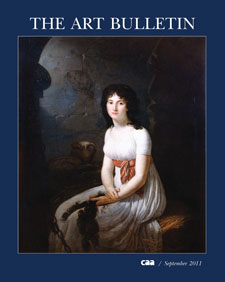 The September 2011 issue of The Art Bulletin, the leading publication of international art-historical scholarship, features an essay on Michelangelo’s drawings, in particular his cartoon for The Battle of Cascina (1504), and an article on urban scenes by the twentieth-century American painter John Sloan. Two additional contributions explore women and portraiture in postrevolutionary France and Roman mosaic labyrinths in North Africa. Book reviews on the art of Byzantium and imperial China, Mamluk culture, and the impact of modernist primitivism round out the issue.
The September 2011 issue of The Art Bulletin, the leading publication of international art-historical scholarship, features an essay on Michelangelo’s drawings, in particular his cartoon for The Battle of Cascina (1504), and an article on urban scenes by the twentieth-century American painter John Sloan. Two additional contributions explore women and portraiture in postrevolutionary France and Roman mosaic labyrinths in North Africa. Book reviews on the art of Byzantium and imperial China, Mamluk culture, and the impact of modernist primitivism round out the issue.
In “Michelangelo, Drawing, and the Subject of Art,” Joost Keizer uncovers Michelangelo’s zeal for disegno, evasion of iconography, and emphasis on educational models for pupils—all of which contribute to art history via visual commentary on historical moments. In his study, Michael Lobel examines the significant body of work generated by John Sloan in 1907 that experiments with spatial orientation and pigment while challenging the artist’s identity as a painter, illuminated by meditations on New York as a shifting metropolis and his background in illustration.
Amy Freund’s cover essay for The Art Bulletin elucidates the importance of portraiture in France after 1789 in which female portraits, like that of Thérésia Cabarrus by Jean-Louis Laneuville in 1796, incorporated women into the French Revolution’s political presence and momentum toward engaged citizenship in the new republic. In “Roman Labyrinth Mosaics and the Experience of Motion,” Rebecca Molholt explores the effects of a transitory viewing experience within Roman baths in North Africa and the intermingling of architecture, myth, and the spectator.
The Reviews section has a particular emphasis on ancient cultures, starting with Jessica Rawson’s discussion of ancient commercial artists in China and Anthony J. Barbieri-Low’s book, Artisans in Early Imperial China. Charles Barber highlights the complexities of the Byzantine icon through the lens of innovations in fifteenth-century Cretan painting, as well as the sensory experience in Byzantium as described by Clemena Antonova in Space, Time, and Presence in the Icon and Bissera V. Pentcheva’s The Sensual Icon. Several books on the history of the Mamluk period, where military slaves became soldiers and eventually rulers of an empire across Egypt, the Arabian Peninsula, the Levant, and greater Syria, are reviewed by Heghnar Zeitlian Watenpaugh, including Cairo of the Mamluks by Doris Behrens-Abouseif. The final review is an analysis of the tension between African art and Western modernism by Elizabeth Harney, in which she sites Man Ray, African Art, and the Modernist Lens by Wendy A. Grossman and Picasso’s Collection of African and Oceanic Art by Peter Stepan as the newest sources to investigate the legacy of primitivism.
Please see the full table of contents for September to learn more. CAA sends The Art Bulletin to all institutional members and to those individuals who choose to receive the journal as a benefit of their membership.
The next issue of The Art Bulletin, to be published in December 2011, will feature essays on the portraiture of nuns in colonial Mexico, on the sociological context of Hokusai’s famous print Under the Wave off Kanagawa, and on Federico Zuccari’s painting The Encounter of Christ and Veronica on the Way to Calvary, among other articles and reviews.
CWA Picks for July–August 2011
posted by Christopher Howard — August 16, 2011
 Each month, CAA’s Committee on Women in the Arts produces a curated list, called CWA Picks, of recommended exhibitions and events related to feminist art and scholarship in North America and around the world.
Each month, CAA’s Committee on Women in the Arts produces a curated list, called CWA Picks, of recommended exhibitions and events related to feminist art and scholarship in North America and around the world.
The CWA Picks for July–August 2011 shine invigorating spotlights on two momentous forces that supported and inspired international artistic developments in the twentieth century: the Baltimore sisters Claribel and Etta Cone, and the writer and impresario Gertrude Stein. The Jewish Museum in New York hosts an exhibition dedicated to the Cones’ stunning collection of modern art, and the Contemporary Jewish Museum in San Francisco focuses on the Stein’s life and legacy.
If in New York, CWA also suggests viewing a new multichannel video work by Dara Birnbaum at Marian Goodman Gallery and taking a journey around the world via Ruth Gruber’s photographs at the International Center of Photography. Elsewhere, The Guerrilla Girls Talk Back is a recommended exhibition of newly acquired prints, multiples, and ephemera at the National Museum of Women in the Arts in Washington, DC, and Claude Cahun’s comprehensive retrospective at Jeu de Paume in Paris, France, addresses issues in feminist scholarship and turning points in the understanding of the female artist.
Check the archive of CWA Picks at the bottom of the page, as several museum and gallery shows listed in previous months may still be on view or touring.
Image: Claribel Cone, Gertrude Stein, and Etta Cone sitting a table in Settignano, Italy, June 26, 1903. Baltimore Museum of Art. Dr. Claribel Cone and Miss Etta Cone Papers, Archives and Manuscripts Collection, CG.12 (photograph provided by the Baltimore Museum of Art)
CAA Members Are Invited to Attend a Symposium on “Re-envisioning Lower Manhattan”
posted by Christopher Howard — August 15, 2011
The Alliance for Downtown New York and the National September 11 Memorial and Museum are offering a special discount to CAA members for an upcoming symposium in New York, “Re-envisioning Lower Manhattan: Downtown after 9/11.” The program will take place on Thursday, September 15, 2011, at 6:30 PM at the Museum of the City of New York, 220 Fifth Avenue, New York, NY 10029.
In the aftermath of the terrorist attacks of 2001, many feared for the future of lower Manhattan. Today, residential occupancy in the neighborhood has doubled at the same time that commercial tenants have diversified to include creative industries and media, alongside the traditional financial industry of downtown. How will the neighborhood look as developers respond to the increased diversity of both the residential and business sectors? How will the completion of work at the World Trade Center site affect the neighborhood? What is the future of lower Manhattan? Elizabeth Berger, president of the Alliance for Downtown New York, will discuss the changes in the landscape of lower Manhattan with a group of planners, developers, and corporate executives who have chosen to relocate downtown.
Reservations are required; please call 917-492-3395 or write to programs@mcny.org to register. Admission is $6 when you mention the College Art Association or CAA; otherwise the symposium will cost $6 for museum members, $8 for seniors and students, and $12 for nonmembers.
Grants, Awards, and Honors
posted by CAA — August 15, 2011
CAA recognizes its members for their professional achievements, be it a grant, fellowship, residency, book prize, honorary degree, or related award.
Grants, Awards, and Honors is published every two months: in February, April, June, August, October, and December. To learn more about submitting a listing, please follow the instructions on the main Member News page.
August 2011
Joseph Ackley, a doctoral candidate in the Institute of Fine Arts at New York University focusing on medieval art, issues of translation, and material identity, has recently received a German Academic Exchange Service with a graduate scholarship to support research in Germany.
Andrea Bell, a PhD student in the Institute of Fine Arts at New York University with an interest in eighteenth-century French drawing, has accepted a one-year doctoral fellowship for research in Paris through an inaugural program of the Centre Allemand/Deutsches Kunstforum.
Doris Berger, an independent scholar based in Los Angeles, has earned a postdoctoral fellowship from the Getty Research Institute. She will investigate the avant-garde, contemporary film, and gender studies in her project, “Hans Richter’s Artistic Practice in Painting and Film.”
Susanneh Bieber of the Freie Universität in Berlin, Germany, has been awarded a postdoctoral fellowship from the Smithsonian American Art Museum for research in Washington, DC. Her project is entitled “Construction Sites: American Artists Engage the Built Environment.”
Alan C. Braddock, assistant professor in the Tyler School of Art at Temple University in Philadelphia, Pennsylvania, has received a senior fellowship from the Smithsonian American Art Museum. During academic year 2011–12, he will be in residence at the museum in Washington, DC, to research his project, called “Gun Vision: The Ballistic Imagination of American Art from Homer to O’Keeffe.”
Shira Niamh Brisman, a doctoral candidate at Yale University in New Haven, Connecticut, has been named an ACLS Dissertation Completion Fellow for her paper on the communicative nature of images and the influence of letters, particularly in the case of Albrecht Durer, entitled “Art and the Epistolary Mode of Address in the Age of Albrecht Dürer.”
Jonathan Brown, Carroll and Milton Petrie Professor of Fine Arts in the Institute of Fine Arts at New York University, has received the Bernardo de Galvez Award from the US-Spain Council. The award acknowledges an extreme appreciation and contribution to the comprehension of Spanish art and history.
Kathryn Jane Brown, an assistant professor of art history at Tilburg University in the Netherlands, has received a $5,000 grant from the Shpilman Institute of Photography. Her project is entitled “Photography, Poetry, and Sculpture: ‘La Mort et les statues’ by Pierre Jahan and Jean Cocteau.”
Amy Buono, a scholar of colonial Latin American art and assistant professor in the Art History Department at Southern Methodist University in Dallas, Texas, has earned a postdoctoral fellowship through the Getty Research Institute for academic year 2011–12. She will continue her project, “Techniques of Color and Deception: Brazilian Art in Early Modern Europe.”
Derek Scott Burdette, a doctoral candidate at Tulane University in New Orleans, Louisiana, has been awarded an ACLS Dissertation Completion Fellowship to complete his investigation of “Miraculous Crucifixes and the Construction of Mexican Colonialism: The Artistic, Devotional, and Political Lives of Mexico City’s Early-Colonial Cristos.”
Joanna Cannon, a reader in the History of Art Department at the Courtauld Institute of Art in London, England, has received a Los Angeles Architecture fellowship from the Getty Research Institute in the Manuscripts department.
Jenny Carson of the Maryland Institute College of Art in Baltimore, Maryland, has received a senior fellowship from the Smithsonian American Art Museum for the 2011–12 academic year. She will conduct research at the museum in Washington, DC, for her project, “The Art and Studio of William Henry Rinehart.”
Ignaz Cassar has been awarded a $5,000 grant from the Shpilman Institute of Photography for research on his project, “The Imaginary of the Darkroom: Interiority and the Aesthetics of the Secret.” This project, part of an inaugural Grants Program, will consider the infinite intrigue of the darkroom in the wake of the digital era.
Liam Considine of the Institute of Fine Arts at New York University has been named Sara Roby Predoctoral Fellow in Twentieth-Century American Realism by the Smithsonian American Art Museum in Washington, DC. During the 2011–12 academic year, he will conduct research at the museum for his dissertation, titled “Innovation and Disavowal: American Pop Art in France, 1962–1968.”
Alexandra Davis, a doctoral candidate in the History of Art Department at the University of Pennsylvania in Philadephia, has received a 2011 Henry Luce Foundation/ACLS Dissertation Fellowship in American Art. Her winning essay, “The Portrayal of the Artist-as-Celebrity in American Fashion and Lifestyle Magazines, 1923–1952“, analyzes the fusion of artist and celebrity in the media.
Sabina de Cavi, an independent scholar and curator based in Rome, Italy, has received a postdoctoral fellowship through the Getty Research Institute for the 2011–12 academic year. Her project, “Architectural Drawing as a Collaborative Process: Materials, Tools, Workshop Production, and Pattern Transmission in the Sicilian Workshop of Giacomo Amato (1643–1732),” will build on her enthusiasm for aspects of ritual and materiality in art.
Elise Dodeles, a painter based in New Jersey, has been awarded first prize in the William Way LGBTQ Community Center’s sixth annual juried show competition. She will have a solo show at the gallery space in Philadelphia in January 2012.
Ross K. Elfline has been presented with a research grant from the Graham Foundation for Advanced Studies in the Fine Arts. With it he will investigate the photomontages and drawings published by Superstudio, a radical architectural collective established in the 1960s.
Rachel Federman, a doctoral candidate in art history in the Institute of Fine Arts at New York University, has been honored with a $1,500 Getty Research Institute’s Library Research Grant.
Seth Feman of the College of William and Mary in Williamsburg, Virginia, has been named Patricia and Phillip Frost Predoctoral Fellow by the Smithsonian American Art Museum in Washington, DC. For academic year 2011–12, he will be in residence at the museum to work on “Paintings in Place: Encountering Art in Washington’s National
Matthew Fisk, a doctoral candidate at the University of California, Santa Barbara, has been awarded a 2011 Henry Luce Foundation/ACLS Dissertation Fellowship in American Art for his essay, “Art, Speculation, and Diplomacy: John Trumbull, A Federalist Painter in Europe, 1780–1816,“ which offers insight into Trumbull’s complex outlook as an artist, speculator, and diplomat living abroad during the American and French revolutions.
Francesco Freddolini has been granted the Display of Art in Roman Palaces Fellowship through the Getty Research Institute for the 2011–12 academic year. A recipient of a PhD from the Universita di Pisa in Italy, he will investigate Italian Baroque sculpture in his project, “Collecting and Displaying Sculpture in Medicean Tuscany, c. 1600–1737.”
Heidi Gearhart, who completed her doctorate in the Department of Art History at the University of Michigan in Ann Arbor, has earned a postdoctoral fellowship for the 2011–12 academic year from the Getty Research Institute for her project, “Theophilus’ On Diverse Arts: Artists and Art-Making in the High Middle Ages.”
Bridget Gilman, a doctoral candidate in the History of Art Department at the University of Michigan in Ann Arbor, has received a 2011 Henry Luce Foundation/ACLS Dissertation Fellowship in American Art. Her project, “Re-envisioning Everyday Spaces: Photorealism in the San Francisco Bay Area,” proposes a link between landscape painting and realist painting of the twentieth century that may reveal a new understanding of the American lifestyle.
Michelle Handelman has received a grant from the MAP Fund to generate Triangle of Resistance, an interdisciplinary performance with the musician and composer Miya Masaoka that investigates media’s ability to motivate or frame social action.
Natilee Harren, a doctoral candidate in the Department of Art History at the University of California, Los Angeles, has received a Getty Research Institute Predoctoral Fellowship for the 2011–12 academic year. She will continue her project, “Objects without Object: The Artwork in Flux, 1958–1969.”
Elizabeth W. Hutchinson, associate professor of art history at Barnard College in New York, has been granted a 2011 ACLS Fellowship for her paper, “Muybridge’s Pacific Coast: Landscape Photographs and Cultural Topography,” a comprehensive study of Eadweard Muybridge’s early interaction with the Pacific coast.
Timothy Hyde has secured a 2011 publications grant from the Graham Foundation for Advanced Studies in the Fine Arts for his book manuscript, A Constitutional Modernism: Architecture and Civil Society in the Cuban Republic, which proposes the significance of architecture and urban planning in modernism in Cuba between 1933 and 1959.
Sharon Irish has been awarded a 2011 research grant from the Graham Foundation of Advanced Studies in the Fine Arts to investigate the interdisciplinary innovations of the London-based artist Stephen Willats and his exploration of social interactions, power structures, and distinct behavior in particular cities.
Barthèlèmy Jobert, professor of history of contemporary art at the Universitè Paris-Sorbonne (Paris IV), has been appointed a guest scholar at the Getty Research Institute for spring 2011 to work on “Delacroix: Romantic Artists and the Drawing Album.”
Karolina Karlic, an artist based in Los Angeles, California, has been named a 2011 John Simon Guggenheim Memorial Foundation Fellow in photography.
Sonya S. Lee, assistant professor of art history at the University of Southern California in Los Angeles, has been presented with a 2011 ACLS Fellowship. Her research project, “Between Culture and Nature: Cave Temples of Sichuan,” analyzes the cultural foundation of China’s sacred grounds and their contribution to aesthetic, historical, and religious dialogues.
Sarah Lepinski, a scholar who recently received her doctorate from the Department of Classical and Near Eastern Archeology at Bryn Mawr College in Pennsylvania, has been awarded a postdoctoral fellowship from the Getty Research Institute. For the 2011–12 academic year she will work on her project, titled “Painting Practices in Roman and Late Antique Corinth, Greece.”
Emily Liebert of Columbia University in New York has received a predoctoral fellowship at the Archives of American Art, awarded through the Smithsonian American Art Museum in Washington, DC. She will conduct research in 2011–12 on her project, called “Roles Recast: Eleanor Antin and the 1970s.”
Anne Lindberg, an artist based in Kansas City, Missouri, has earned a grant from the Lighton International Artists Exchange Program to facilitate a three-month residency at Kunstnerhuset i Lofoten in Svolvaer, Norway. She departs in September 2011.
Michael Lobel, associate professor of art history at Purchase College, State University of New York, has been awarded a Getty scholarship with an emphasis on artistic practice. His research project examines “Becoming an Artist: John Sloan, the Ashcan School, and Popular Illustration.”
Natalia Majluf, director of the Museo de Arte de Lima and academic coordinator of the MA program in art history at Pontificia Universidad Católica del Perú, has been honored as a 2011 Fellow in Latin American and Caribbean studies by the John Simon Guggenheim Memorial Foundation. She will complete a book during her tenure on the Peruvian painter Francisco Laso and his portrayal of the nineteenth-century Peruvian native.
George H. Marcus has been awarded a publications grant from the Graham Foundation of Advanced Studies in the Fine Arts for The Houses of Louis Kahn, a book manuscript written with William Whitaker that will analyze the historical framework and spatial details of nine homes designed by Louis Kahn between 1940 and 1973.
Areli Marina has received a publications grant from the Graham Foundation of Advanced Studies in the Fine Arts. Her book manuscript, The Italian Piazza Transformed: Parma in the Communal Age, explores the development of civic centers in the northern Italian city of Parma and their cultural significance.
Tara Cooke McDowell, a doctoral candidate in the History of Art Department at the University of California, Berkeley, has been awarded a Henry Luce Foundation/ACLS Dissertation Fellowship in American Art 2011. Her study, “Image Nation: The Art of Jess 1951–1991,” investigates the San Francisco–based artist Jess and his cross-disciplinary practice in the atomic age.
Jonathan Mekinda has been awarded a publication grant from the Graham Foundation for Advanced Studies in the Fine Arts to produce Chicago in the World, a collection of essays written with Alexander Eisenschmidt that reveal the city’s significance as an incubator of architectural and urban innovation.
Kimberli Meyer has received a 2011 research grant from the Graham Foundation of Advanced Studies in the Fine Arts for “Hyper House and Home”, a project exploring how domestic space mingles with do-it-yourself design, digital technology, and the public.
Cynthia J. Mills, an independent scholar, has been granted an ACLS Fellowship for research at the Smithsonian American Art Museum. She will conduct a study of figurative sculpture produced at the end of the nineteenth century for American cemeteries in an essay called “Beyond Grief: Art, Mourning, and Mystery in the Gilded Age.”
Nicholas Mirzoeff, a professor of media, culture, and communication at New York University, has been awarded a $5,000 grant from the Shpilman Institute of Photography for a research project entitled “The Photographic Common and Authoritarian Realism: A Genealogy of the 2011 Revolutions.”
Kate Mondloch, assistant professor of art history at the University of Oregon in Eugene, has earned a 2011 ACLS Fellowship for “Eye Desire: Media Art after Feminism,” a paper that presents a theoretical and historical analysis of media arts since 1990 that have been informed by feminism.
Iris Moon, a doctoral candidate in the Department of Architecture at the Massachusetts Institute of Technology in Cambridge, has been awarded a predoctoral fellowship through the Getty Research Institute. During the 2011–12 academic year, she will research “Charles Percier and Pierre-François-Lèonard Fontaine’s Interior Decoration Practice in Napoleonic France, ca. 1800.”
Emily L. Moore, a doctoral candidate in the History of Art Department at the University of California, Berkeley, has earned a 2011 Henry Luce Foundation/ACLS Dissertation Fellowship in American Art for her research on “‘For Future Generations’: Transculturation and the Totem Parks of the New Deal, 1938–1942,“ which uncovers the intricacies of the New Deal’s interactions with Alaskan “totem parks.”
Steven Nelson, associate professor of art history at the University of California, Los Angeles, has earned a Getty scholarship for academic year 2011–12 and has also qualified as the Consortium Scholar. His research project, “Dakar: The Making of an African Metropolis,” pivots on Africa’s diasporas and history, queer studies, and the urban environment in Africa.
Linda Nochlin, Lila Acheson Wallace Professor of Modern Art in the Institute of Fine Arts at New York University, has been honored with a 2011 Icon Award from the Bruce Museum in Greenwich, Connecticut for her commitment to the arts and art history.
Bibiana Obler, a doctoral student at George Washington University in Washington, DC, has been named James Renwick Postdoctoral Fellow in American Craft by the Smithsonian American Art Museum. She will further develop her project, “The Anti-Craft Tradition,” in residence at the museum during the 2011–12 academic year.
Erin Pauwels of Indiana University in Bloomington has received a Wyeth Foundation Postdoctoral Fellowship to conduct research at the Smithsonian American Art Museum in Washington, DC, during academic year 2011–12. Her dissertation is called “Impersonating Identity: Celebrity, Costume, and Dramatic Realism in the Gilded Age American Portraiture.”
Lauren Hackworth Petersen, associate professor of art history at the University of Delaware in Newark, has been awarded an ACLS Collaborative Research Fellowship for The Material Life of Roman Slaves, a forthcoming book coauthored with Sandra R. Joshel on the presence of slaves through archeological findings in the Roman landscape and textual references.
Cory Pillen, a PhD candidate at the University of Wisconsin in Madison, has received a predoctoral fellowship from the Smithsonian American Art Museum to research his project, “WPA Posters: A New Deal for Design,” at the museum in Washington, DC, for the 2011–12 academic year.
Amy Powell, assistant professor of art history at the University of California in Irvine, has received an ACLS Fellowship for 2011. She will generate a paper on “The Whitewashed Image: Iconoclasm and Seventeenth-Century Dutch Landscapes.”
Miguel Rivera, an artist and director of the Printmaking Department at the Kansas City Art Institute in Missouri, has been awarded a three-week residency at Proyecto’ACE in Buenos Aires, Argentina, to develop his project, “Cities’ Dialogues and Paranoia.”
Iraida Rodríguez-Negrón is a PhD candidate in the Institute of Fine Arts at New York University, has received a 2011–12 The Meadows/Kress Prado Fellowship, to conduct research at Southern Methodist University in Dallas, Texas, and the Museo Nacional del Prado in Madrid, Spain.
Sarah Ross has been awarded a 2011 grant from the Graham Foundation for Advanced Studies in the Fine Arts for her traveling exhibition, Global Cities, Model Worlds, organized with Ryan Griffis and Lize Mogel. Each incarnation of the show, scheduled to appear through 2013 in cities that have hosted or bid for the Olympics or a World’s Fair, explores the ideological and social impact of such major events.
Vimalin Rujivacharakul has accepted a 2011 research grant from the Graham Foundation of Advanced Studies in the Fine Arts to develop his project, “The Orient of the East and the West of the Ocean,” which examines the perception of world architecture from the standpoint of a leading Japanese intellectual, Ito Chuta.
Tanya Sheehan, assistant professor of art history at Rutgers University in New Brunswick, New Jersey, has received a short-term research fellowship from the New York Public Library and a fellowship from the W E. B. Du Bois Institute for African and African American Research at Harvard University to examine references to race in photographic humor from 1839 through the twentieth century.
Elena Shtromberg, assistant professor of art and art history at the University of Utah in Salt Lake City, has been awarded a 2011 ACLS Fellowship to conduct research for her paper, “Art and Information: Political Encounters in Brazil, 1968–1978,” which examines the relation of art production to social spheres, information theory, and international discourse during Brazil’s most violently tyrannical decade.
Molly Springfield, an artist based in Washington, DC, has received a $5,000 grant from the DC Commission on the Arts and Humanities via its the 2011 Artist Fellowship program.
Allison Stagg of University College London in England has been awarded a postdoctoral fellowship at the National Portrait Gallery in Washington, DC, by the Smithsonian American Art Museum. She will conduct research her project, “The Art of Wit: Political Caricature in the United States, 1780–1830.”
Nathaniel Stein, a professor at the Rhode Island School of Design in Providence, has been awarded a $5,000 research grant from the Shpilman Institute of Photography for a paper titled “Authorities of Presence: Robert Gill, Survey Photography, and the Colonial Sublime.”
Helena Katalin Szepe, associate professor of art history at the University of South Florida in Tampa, has been honored with a fellowship for scholarly research from ACLS. Her project, “Privilege and Duty in the Serene Republic: Illuminated Manuscripts of Renaissance Venice,” investigates the duality of illuminated civic manuscripts and their role in memorializing and glorifying statesmen of the Renaissance.
Penelope Umbrico, an artist and a faculty member at the School of Visual Arts in New York and in the Milton Avery Graduate School of the Arts at Bard College in Annandale-on-Hudson, New York, has received a 2011 John Simon Guggenheim Memorial Foundation Fellowship in photography.
Catharine H. Walsh, a doctoral candidate in the Art History Department at University of Delaware in Newark, has received a 2011 Henry Luce Foundation/ACLS Dissertation Fellowship in American Art. Her research, titled “Tell Me a Story: Narrative and Orality in Nineteenth Century American Visual Culture,” investigates the multisensory experience of art produced between 1830 and 1870.
P. Gregory Warden, University Distinguished Professor of Art History and associate dean for academic affairs in the Meadows School of the Arts at Southern Methodist University in Dallas, Texas, has been accepted into the Order of the Star of Italian Solidarity and received the title of cavaliere in the name of the president of the Italian republic. Warden’s contributions include spearheading the excavation of Poggio Colla, an Etruscan site, since 1995; organizing an extensive exhibition of Etruscan art for his institution in 2009; and enhancing the prestige and understanding of Etruscan and Roman art since joining the Art History Department in 1982.
Srdjan Jovanovic Weiss has received a 2011 publications grant from the Graham Foundation of Advanced Studies in the Fine Arts for Socialist Architecture: The Vanishing Act, a collaborative project with Armin Linke that documents the dismissed architecture of Croatia, Macedonia, and Serbia left vacant since the dissolution of the Socialist Federation of Yugoslavia.
Kelly Whitford, a graduate student in the Department of Art History at the University of Oregon in Eugene, has accepted a $5,000 award via the 2010–11 Dean’s Graduate Fellowship for her research and scholarship in the final phase of her dissertation, called “A Re-Performance: Viewing Stefano Madern’s St. Cecilia during the Jubilee of 1600.”
John M. Willis, an artist and professor of photography at Marlboro College in Marlboro, Vermont, has received a 2011 photography fellowship from the John Simon Guggenheim Memorial Foundation.
Hannah Wong of the University of Texas at Austin has accepted predoctoral fellowship at the National Portrait Gallery in Washington, DC, awarded by the Smithsonian Museum of American Art. During academic year 2011–12, she will conduct research on “A ‘Funny Guy’ Visits America: The Role of Humor in the Works of Francis Picabia, 1913–17.”
Cassie Wu, a doctoral candidate in the Department of Art History at the University of California, Los Angeles, has been awarded a 2011 Henry Luce Foundation/ACLS Dissertation Fellowship in American Art for her study, “Perfect Objects: The Lives of Allan McCollum’s Work.” Her monographic study of this American artist reveals an aggressive critique of commoditization through his production of dynamic objects.
Kathryn Wysocki, a doctoral candidate in the Institute of Fine Arts at New York University whose research explores bronze installations by the King of Benin in the sixteenth and seventeenth centuries, has accepted a graduate scholarship from the German Academic Exchange Service, which will allow for study in Germany.
Tatsiana Zhurauliova, a graduate student in art history at Yale University in New Haven, Connecticut, has accepted a Terra Foundation for American Art Predoctoral Fellowship from the Smithsonian American Art Museum. She will conduct research at the museum during academic year 2011–12 for her project, “Arcadia Americana: Landscape in the Art of Arshile Gorky, Pavel Tchelitchew, and Yasuo Kuniyoshi during World War II.”




 Lisa Blas, Poppy Autoportrait, 2011, postcard stock on music paper, 29.7 x 21 cm (artwork © Lisa Blas)
Lisa Blas, Poppy Autoportrait, 2011, postcard stock on music paper, 29.7 x 21 cm (artwork © Lisa Blas)
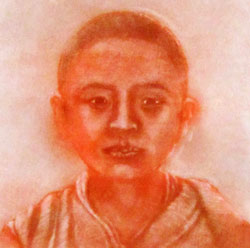 Eduardo Fausti, Arun, 2010, mezzotint, 13 x 11½ in. (artwork © Eduardo Fausti)
Eduardo Fausti, Arun, 2010, mezzotint, 13 x 11½ in. (artwork © Eduardo Fausti)
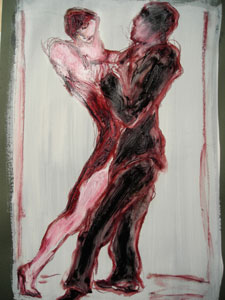 Jan Wurm, Tango, 2010, mixed media on paper, 18 x 14 in. (artwork © Jan Wurm)
Jan Wurm, Tango, 2010, mixed media on paper, 18 x 14 in. (artwork © Jan Wurm)
 Diane Burko, Over Montana Glacier National Park 4, 2011, archival inkjet print on Canson Edition Etching Rag, 30 x 30 in. (artwork © Diane Burko)
Diane Burko, Over Montana Glacier National Park 4, 2011, archival inkjet print on Canson Edition Etching Rag, 30 x 30 in. (artwork © Diane Burko)
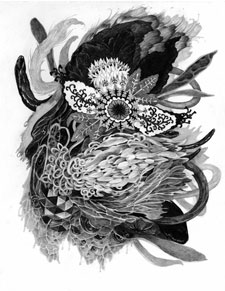 Angela Piehl, Bloom, 2011, graphite on paper, 14 x 11 in. (artwork © Angela Piehl)
Angela Piehl, Bloom, 2011, graphite on paper, 14 x 11 in. (artwork © Angela Piehl)
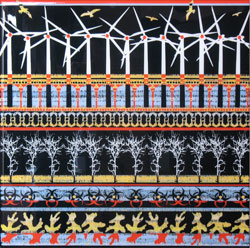 Margi Weir, In the Wind, 2010, acrylic, vinyl, and resin on panel, 24 x 24 in. (artwork © Margi Weir)
Margi Weir, In the Wind, 2010, acrylic, vinyl, and resin on panel, 24 x 24 in. (artwork © Margi Weir)
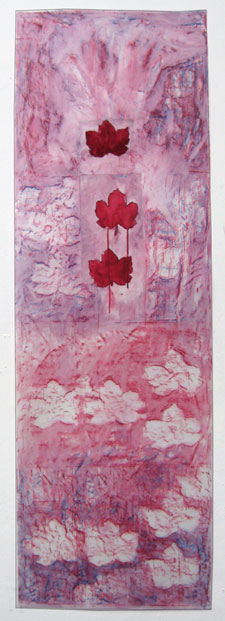 Nancy Azara, Three Leaves with Hands, 2010, rubbing, collage, oil pastel, paint, and pencil on mylar, 74 x 24 in. (artwork © Nancy Azara)
Nancy Azara, Three Leaves with Hands, 2010, rubbing, collage, oil pastel, paint, and pencil on mylar, 74 x 24 in. (artwork © Nancy Azara)
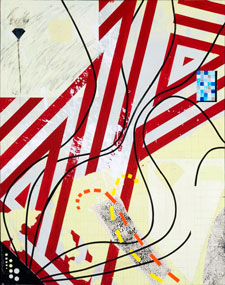 Thomas Brauer, Black Diamond, 2009, acrylic on wood panel, 41 x 32 in. (artwork © Thomas Brauer)
Thomas Brauer, Black Diamond, 2009, acrylic on wood panel, 41 x 32 in. (artwork © Thomas Brauer)
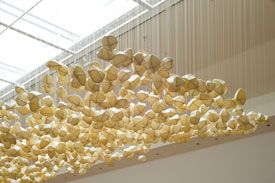 Lorrie Fredette, The Great Silence, 2011, beeswax, tree resin, muslin, brass, steel, and nylon line, 8½ x 5 2/3 x 36 11/12 ft., suspended 7 ft. below a skylight (artwork © Lorrie Fredette; photograph by Kevin Thomas)
Lorrie Fredette, The Great Silence, 2011, beeswax, tree resin, muslin, brass, steel, and nylon line, 8½ x 5 2/3 x 36 11/12 ft., suspended 7 ft. below a skylight (artwork © Lorrie Fredette; photograph by Kevin Thomas)
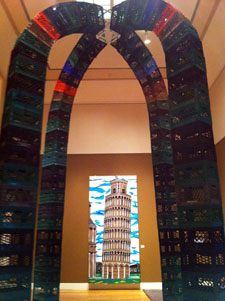 Joe Girandola, Perso/Trovo, 2011, milkcrates, marble, and steel, 252 x 120 x 120 in.; and Dialogo sopra I due massimi sistemi del mondo (Dialogue Concerning the Two Chief World Systems), 2011, duct tape on canvas and UV sealed with archival surfboard resin, 144 x 60 x 10 in. (artworks © Joe Girandola)
Joe Girandola, Perso/Trovo, 2011, milkcrates, marble, and steel, 252 x 120 x 120 in.; and Dialogo sopra I due massimi sistemi del mondo (Dialogue Concerning the Two Chief World Systems), 2011, duct tape on canvas and UV sealed with archival surfboard resin, 144 x 60 x 10 in. (artworks © Joe Girandola)
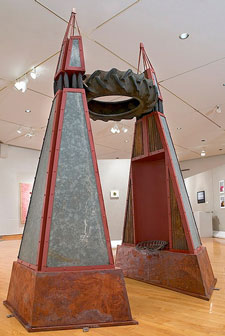 Greg L. Mueller, Portal for the Agrarian, 2008, reclaimed agricultural salvage and cast iron, 12 x 7 x 5 ft. (artwork © Greg Mueller; photograph by Keith Meiser Photography, Bowling Green, Ohio)
Greg L. Mueller, Portal for the Agrarian, 2008, reclaimed agricultural salvage and cast iron, 12 x 7 x 5 ft. (artwork © Greg Mueller; photograph by Keith Meiser Photography, Bowling Green, Ohio) 
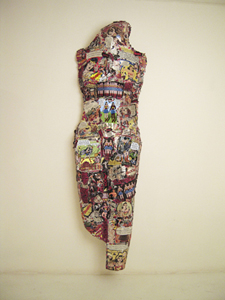 Linda Stein, Justice for All 698, 2010, acrylicized metallic paper, archival inks, and mixed media, 79 x 40 x 9 in. (artwork © Linda Stein)
Linda Stein, Justice for All 698, 2010, acrylicized metallic paper, archival inks, and mixed media, 79 x 40 x 9 in. (artwork © Linda Stein)
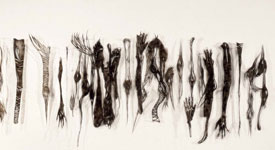 Mary Ting, Rows of Beaks, Hands and Feet, Ginling Women’s University, Nanjing Memorial, 2006, cut paper and soot, 13 ft. x 2 ft. x 4 in. (artwork © Mary Ting)
Mary Ting, Rows of Beaks, Hands and Feet, Ginling Women’s University, Nanjing Memorial, 2006, cut paper and soot, 13 ft. x 2 ft. x 4 in. (artwork © Mary Ting)
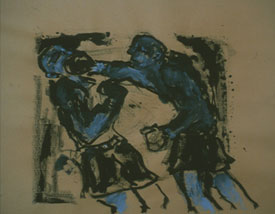 Jan Wurm, Boxing, 2007, ink and chalk on paper, 22 x 28 in. (artwork © Jan Wurm)
Jan Wurm, Boxing, 2007, ink and chalk on paper, 22 x 28 in. (artwork © Jan Wurm)
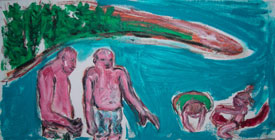 Jan Wurm, Whiskeytown Lake, 2010, conté crayon, charcoal, and oil stick on canvas, 12 x 24 in. (artwork © Jan Wurm)
Jan Wurm, Whiskeytown Lake, 2010, conté crayon, charcoal, and oil stick on canvas, 12 x 24 in. (artwork © Jan Wurm)
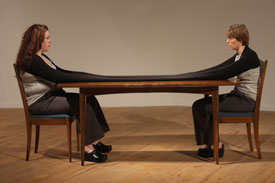 Laurel Jay Carpenter (left) performs with the Norwegian artist Terese Longva, an alumna of Alfred University
Laurel Jay Carpenter (left) performs with the Norwegian artist Terese Longva, an alumna of Alfred University

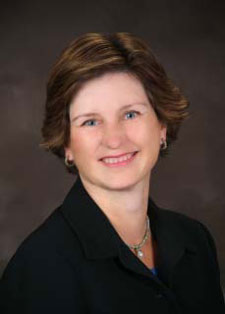 Diane P. Fischer
Diane P. Fischer
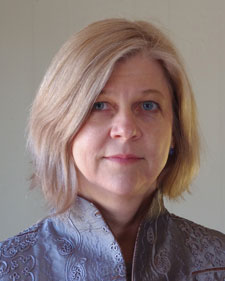 Donna Gustafson (photograph by Andrew Mitchell)
Donna Gustafson (photograph by Andrew Mitchell)
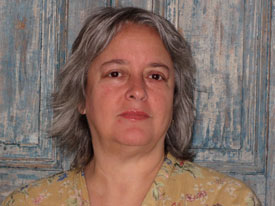 Elena Phipps
Elena Phipps
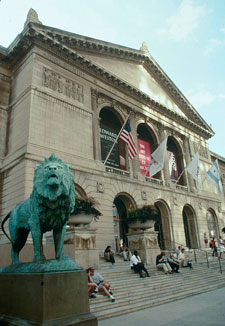 South view of the Michigan Avenue façade of the Art Institute of Chicago (photograph provided by the Art Institute of Chicago)
South view of the Michigan Avenue façade of the Art Institute of Chicago (photograph provided by the Art Institute of Chicago)
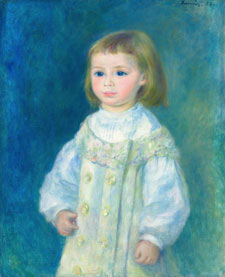 Pierre-Auguste Renoir, Lucie Berard (Child in White), 1883, oil on canvas, 24¼ x 19¾ in. Art Institute of Chicago, Mr. and Mrs. Martin A. Ryerson Collection, 1933.1172 (artwork in the public domain)
Pierre-Auguste Renoir, Lucie Berard (Child in White), 1883, oil on canvas, 24¼ x 19¾ in. Art Institute of Chicago, Mr. and Mrs. Martin A. Ryerson Collection, 1933.1172 (artwork in the public domain)
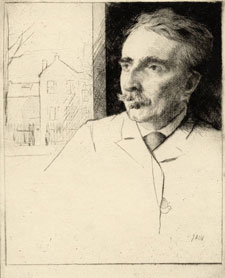 Julian Alden Weir, Portrait of John F. Weir, 1890, drypoint, 7 x 6 in. Brigham Young University Museum of Art (artwork in the public domain)
Julian Alden Weir, Portrait of John F. Weir, 1890, drypoint, 7 x 6 in. Brigham Young University Museum of Art (artwork in the public domain)
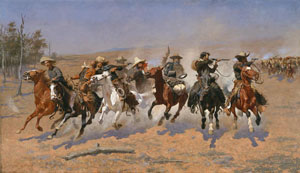 Frederic S. Remington, A Dash for the Timber, 1889, oil on canvas, 48¼ by 84⅛ in. Amon Carter Museum of American Art, Fort Worth, Texas. 1961.381 (artwork in the public domain)
Frederic S. Remington, A Dash for the Timber, 1889, oil on canvas, 48¼ by 84⅛ in. Amon Carter Museum of American Art, Fort Worth, Texas. 1961.381 (artwork in the public domain)
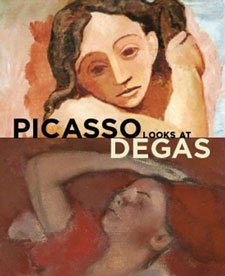

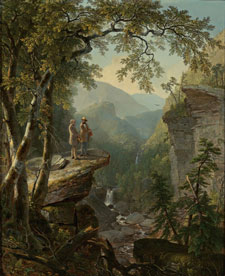 Asher B. Durand, Kindred Spirits, 1849, oil on canvas, 44 x 36 in. Crystal Bridges Museum of American Art, Bentonville, Arkansas (artwork in the public domain)
Asher B. Durand, Kindred Spirits, 1849, oil on canvas, 44 x 36 in. Crystal Bridges Museum of American Art, Bentonville, Arkansas (artwork in the public domain)
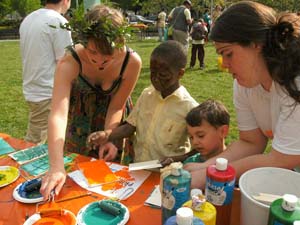 Students from Maryland Institute College of Art teach art to Baltimore-area children in a recent festival in the Community Arts Partnerships program (photograph provided by Maryland Institute College of Art)
Students from Maryland Institute College of Art teach art to Baltimore-area children in a recent festival in the Community Arts Partnerships program (photograph provided by Maryland Institute College of Art)
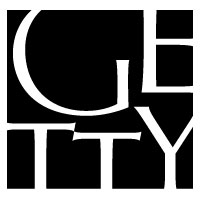

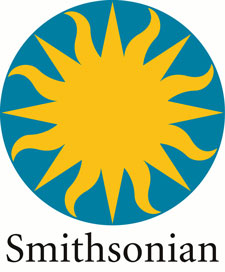

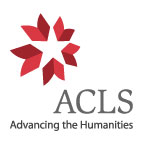

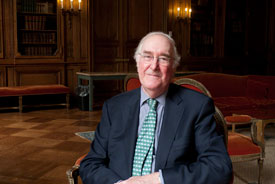 Jonathan Brown
Jonathan Brown


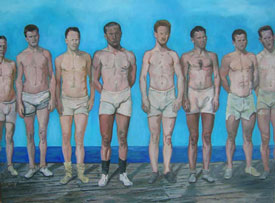 Elise Dodeles, Yale Varsity Line-up, 2008
Elise Dodeles, Yale Varsity Line-up, 2008
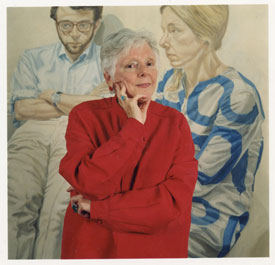 Linda Nochlin (photograph by Matthew Begun)
Linda Nochlin (photograph by Matthew Begun)
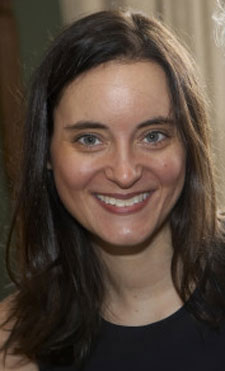 Tanya Sheehan
Tanya Sheehan
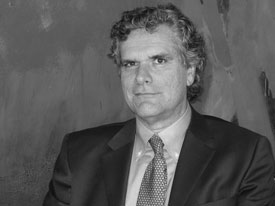 P. Gregory Warden
P. Gregory Warden